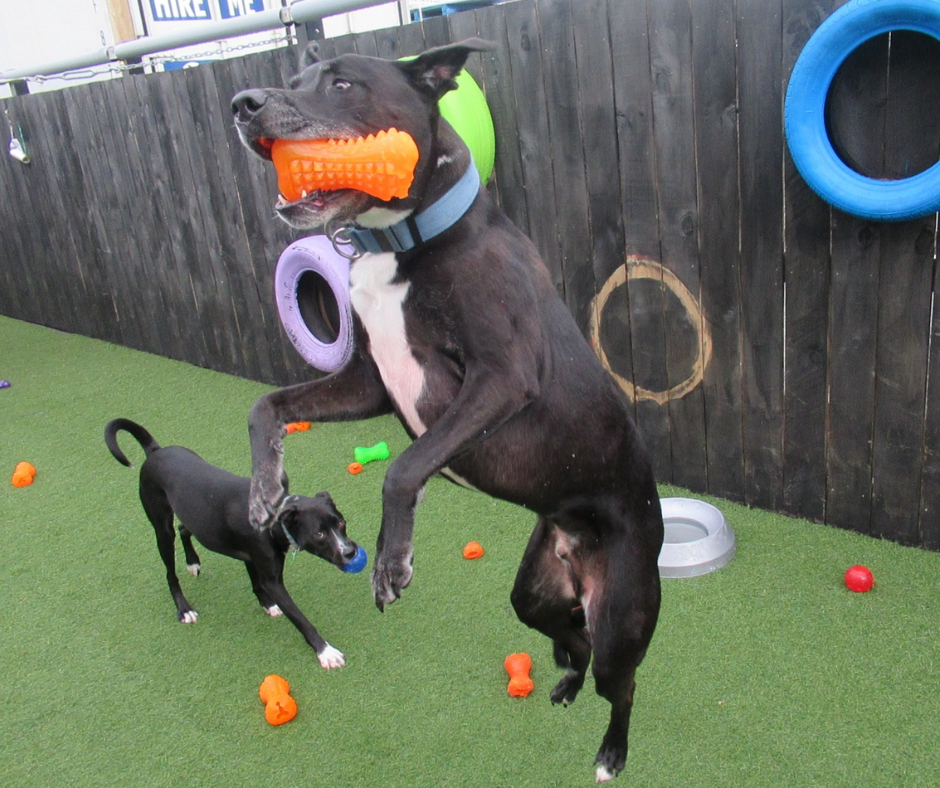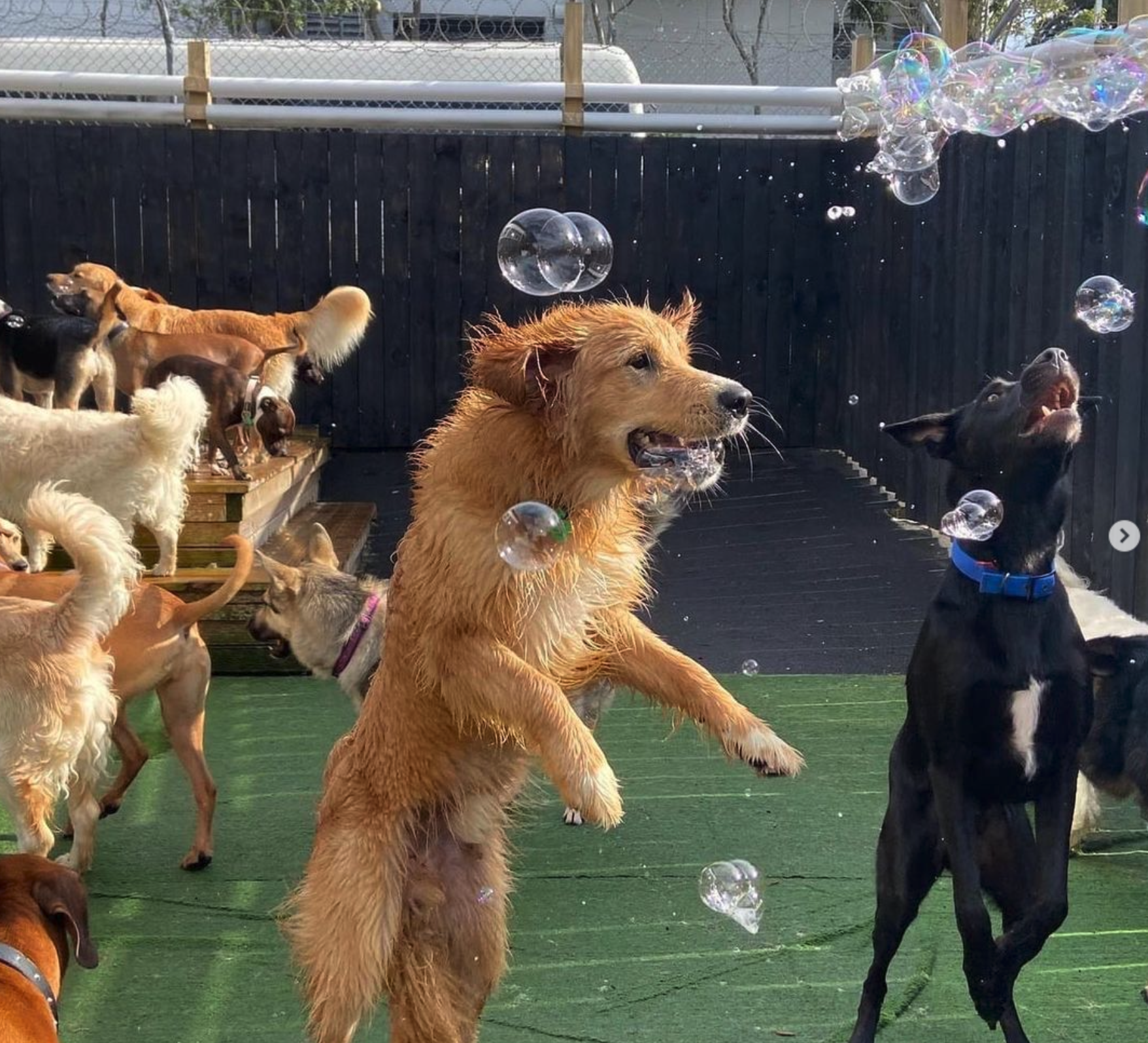The Pets in the City Ultimate Guide: How to Keep Your Dog Safe (and Sane!) During Fireworks
Your complete Auckland-proof plan for turning Guy Fawkes from "Boom-pocalypse" to "Bunker-and-Chill" Why Your Dog Thinks the Sky is Falling (And Why...
Why Your Dog Thinks the Sky is Falling (And Why We’re on Their Side)
For most Auckland dog owners, the calendar flip to November or the lead-up to Diwali and New Year's brings a familiar sense of dread. It’s the time of year when our skies light up, and our brave, happy dogs transform into trembling, terrified shadows. It’s a season less about celebration and more about damage control.
Let’s get our "polite rant" out of the way first. At Pets in the City, our official stance is simple: we’d rather fireworks were never used by the public, ever.
We’re not alone in this. We stand with the NZ SPCA, the New Zealand Veterinary Association (NZVA), and even Auckland Council, all of whom have called for a ban on the private sale and use of fireworks. The reasoning is overwhelming. The psychological terror inflicted on our pets, wildlife, and farm animals is immense. Tragically, this terror also leads to devastating physical injuries. Panicked animals are known to bolt, with one survey noting that 35 percent of horse owners reported horses breaking through fences. For those animals injured, an average of 12.5% died from their trauma or required euthanasia.
There is a glimmer of hope. As of late 2025, a new Member's Bill, the "Fireworks Prohibition Legislation Bill," has been introduced in Parliament aiming to do just that, ban private sales while still allowing for professional, notified public displays.11
But until that bill becomes law, we’re on a mission. This guide is your pragmatic, judgment-free battle plan.
The real problem, as any dog owner knows, isn't just November 5th. Current New Zealand regulations only restrict the sale of fireworks to a tight four-day window (November 2–5). However, there is no limit on when people can actually light them. The NZVA correctly identifies this "sporadic use" from stockpiling as the core issue, as it makes it "difficult" for owners to "reliably plan". This guide is designed to build resilience against that very unpredictability.
To truly help your dog, you first need to understand why this is so terrifying. This isn't your dog being silly; it’s a deep-seated, physiological response.
It’s crucial to know that a dog’s panic attack doesn't always involve howling or shaking. Research shows "high inter-individual variability" in other words, every dog is different. Some are "Loud Lookers" (obvious panic), but many are "Silent Screamers," suffering in ways that are easy to miss.
You must learn to spot the subtle signs before they escalate. Interestingly, while many sources list "yawning" and "lip licking" as key stress signals, one objective study that used video recordings of dogs during actual fireworks found these were not significantly associated with the event. This doesn't mean they aren't stress signals, but rather that the most reliable indicators of a phobic event are:
This table will help you decode your dog's anxiety level, from a quiet "I'm worried" to a full-blown "Mayday!"
|
The "Silent Scream" (Subtle Anxiety) |
The "Red Alert" (Active Panic) |
The "Mayday!" (Severe Phobia / Flight Response) |
|
Backwards-directed ears |
Panting |
Trembling or shaking |
|
Brow furrowed |
Pacing or restlessness |
Hiding or cowering |
|
Yawning |
Drooling |
Excessive clinginess or owner-seeking |
|
Lip licking |
Whining or vocalizing |
Destructive behavior (chewing, digging) |
|
Blinking |
Excessive alertness (hypervigilance) |
Desperate escape attempts |
|
Refusing food or treats |
Freezing or immobility |
Inappropriate urination or defecation |
For a known fireworks event like Guy Fawkes Night, a clear plan is your best defence.
A tired dog is a less-anxious dog. The goal is to expend as much physical and mental energy as possible, long before the sun sets. Plan a significant walk, run, or even better a "sniffari" (a long, meandering walk where they get to sniff everything) before the fireworks start. This surplus energy can otherwise fuel pacing and panic.
Building the ultimate "bunker" (your dog's safe den)
This is your single most effective tool. But it comes with one non-negotiable rule.
A den built on the night of Guy Fawkes is not a safe space. It's just a scary new box you're forcing them into while they think the world is ending. It will fail.
The "bunker" must be built in advance. It must become your dog’s voluntary, happy, safe place before it’s ever needed for a stressful event.
Choose a spot your dog already likes to retreat to. Ideally, this should be in an internal room, away from exterior doors and windows. Don't be afraid to get creative: many dogs naturally choose unconventional spots like an internal bathroom, a walk-in closet, a (dry) bathtub, or even a basement if you have one. Respect their choice.
The Art of Distraction (Drown, Mask, and Chew)
On the night, your job is to manage your dog's sensory environment.
This is the easy part. Close all doors, windows, and (most importantly) draw your curtains and blinds. The bright, unpredictable flashes of light are a major anxiety trigger.
You can't eliminate the booms, but you can camouflage them. Muffle the sharp, scary noises by covering them with a blanket of "safe" noise. Turn on a white noise machine, a fan, or the TV.
This is where your "half-dinner" strategy pays off. Distraction is key. Provide high-value, long-lasting "self-soothe" activities. This means anything that encourages sniffing, licking, or chewing, which are all naturally stress-relieving behaviours.
Step 4: Your Vibe Affects Your Tribe (The Owner Factor)
This is the most nuanced part of the night. Dogs are incredibly sensitive to our emotions.
Your job is to be a calm anchor, not an anxious fixer. Don't fuss, coo, or say "it's okay, it's okay!" in a high-pitched, worried voice this just confirms their suspicion that there is something to be afraid of. Instead, sit on the floor, act relaxed, read a book, and let them lean on you or cuddle if they choose to.
And the #1 rule: NEVER, EVER punish or scold a dog for being afraid. Yelling at a shaking, panting dog for hiding or having an accident will only "increase their stress and worsen the situation".
The "Calm-Me-Down" Toolkit
If your dog needs more than just a bunker, the pet store aisles can be overwhelming. Here’s our honest review of the most common non-prescription aids you'll find in New Zealand.
2. "Good Vibes" in a Bottle (Adaptil / Pheromone Diffusers)
When to Call in the BIG GUNS (Your Vet)
For some dogs, this isn't just "fear." It's a genuine, debilitating phobia. This is when your dog is inconsolable, destructive, or at risk of self-injury. As one owner who had tried everything put it: "I have tried every single calming supplement... None of them worked. Actual meds prescribed by the vet behaviorist did".
If this is your dog, you must see your vet. But there are two non-negotiable rules.
You must see your veterinarian well in advance of fireworks season. You cannot call on November 5th. Some medications, like serotonin reuptake inhibitors, can take several weeks to build up to an effective level.
This is a critical safety tip from vets: You must give your dog a test dose on a calm day, well before the stressful event. Why? To check for side effects. A small number of dogs can have the opposite reaction and become more agitated. The last thing you want is to discover your dog has a bad reaction to a new drug during a fireworks display.
The only "cure" for a true phobia is a long-term desensitization and counterconditioning program. This involves playing recordings of fireworks at a barely audible level while your dog is relaxed or eating. Then, over weeks and months, you gradually increase the volume.
Warning: Do NOT "flood" your dog. Playing the sounds loudly to "get them used to it" is cruel and will backfire, making the phobia worse. This is a "low-and-slow" process best done with the help of a vet or behaviorist.
The Auckland Pet Parent's Emergency Kit
As a city-based company, we know the unique challenges of Tāmaki Makaurau. Here is your local emergency plan.
Plan B: Checklist for "The Great Escape"
If the absolute worst happens and your dog panics and bolts, you will be in a panic too. Print this checklist and put it on your fridge.
|
Service |
Phone Number |
When to Call |
|
Medical Emergency (Injury) |
|
Your dog is injured (e.g., cut from fence, hit by car). |
|
Animal Emergency at VSA (Sylvia Park & Henderson) |
(09) 849 2121 |
|
|
ARC (Albany & Freemans Bay) |
(09) 281 5815 |
|
|
Manukau After Hours Vet Clinic |
(09) 277 8383 |
|
|
Western After Hours |
(09) 820 7273 |
|
|
North Shore Emergency Vets |
(09) 443-5640 |
|
|
Lost or Found Dog |
Auckland Council Animal Management |
09 301 0101 |
|
Lost Pet Database |
NZCAR / LostPet.co.nz |
0508 LOSTPET (567873) |
|
Found Animal (Sick/Injured) |
SPCA Auckland |
09 256 7300 |
You made it through the guide. You're now equipped with a plan to build a "bunker," manage the environment, and advocate for your dog's needs. The goal is preparation, not perfection.
But we want to end by reiterating that this entire, exhaustive guide is a "fix" for a problem that shouldn't have to exist. The stress it places on owners and the sheer "psychological torture" it inflicts on our animals is predictable and preventable.
We ask our "Pets in the City" community to be part of the change. Support the advocacy of the SPCA, NZVA, and other groups calling for a ban on private sales. Be aware of the Fireworks Prohibition Legislation Bill and make your voice heard. Let's work towards a future where Guy Fawkes Night is something we can all enjoy safely, professionally, and quietly.
Stay safe, stay calm, and give your dog a cuddle from us. We've got this, Auckland.

Your complete Auckland-proof plan for turning Guy Fawkes from "Boom-pocalypse" to "Bunker-and-Chill" Why Your Dog Thinks the Sky is Falling (And Why...

This article provides a step-by-step guide for signing your dog up for the PITC VIP Club.

In this article, I provide a step-by-step guide for how to book your dog into daycare through our online portal.